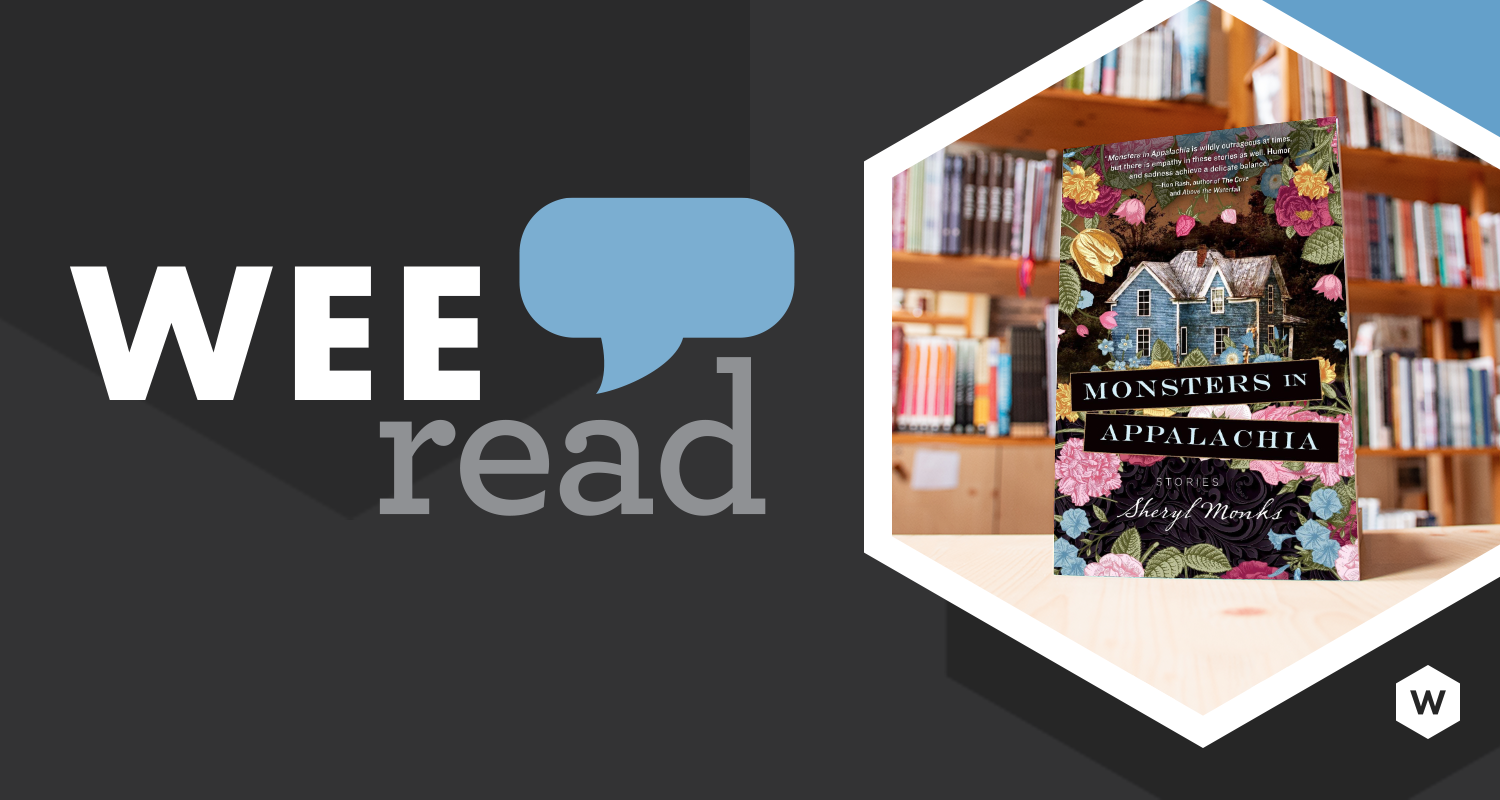With compelling prose and an ear for Appalachian dialects, author Sheryl Monks’ Monsters in Appalachia chronicles monsters ranging from hellish beasts to everyday evils in this collection of fifteen short stories. They range from realistic fiction to magical realism with several that toe the line between; this blurring of genres adds to the outlandish nature of the collection. Using monsters both literal and figurative, Monks weaves together otherwise unrelated stories with an overarching theme of good versus evil.
In stories like “Burning Slag” and “Nympho,” Monks describes everyday “monsters” that take the form of abusers and liars. “Burning Slag” follows a domestic abuse survivor who, after killing her husband, attempts to get back one of the children that was taken from her by the state. In “Nympho,” a teenaged male narrator tries to justify the nasty rumor he spread about a neighbor girl.
Other stories have more abstract monsters like poverty and greed. “Clinch” follows a young mother, Dreama, as she and her two children travel on foot to a feed-and-seed store for provisions. The juxtaposition between promise and reality is sharp when Dreama, moments after hearing President Johnson’s speech addressing poverty, is swindled out of food stamps by an unscrupulous store owner.
Some stories blur the lines between realism and magical: in “Robbing Pillars,” a miner named Maiden witnesses a young Red Hat being electrocuted on the job. Despite the old wives’ tales that warn about thinking about the dead too soon, Maiden cannot help but his preoccupation with the Red Hat who “melted” in front of him or the ghost he saw hovering nearby the day of the accident. The story ends with another accident but is left open-ended, letting the reader decide if Maiden met his maker or witnessed the miraculous.
Some titles best-suited for the Halloween season include “Black Shuck,” “Rasputin’s Remarkable Sleight of Hand,” and “Run, Little Girl.” All three stories could be classified as magical realism and contain themes relating to the occult, the afterlife, or the otherworldly.
In “Black Shuck,” main character Stephen is dogged by the presence of a dark-coated stray that may or may not be “a portent of bad times.” When misfortune befalls the dog’s previous owner, Stephen is convinced that his English grandfather’s superstitions about a “black shuck” were correct. He becomes obsessed with finding the stray, believing it will prevent misfortune from darkening his own doorstep.
“Rasputin’s Remarkable Sleight of Hand” takes place at a carnival where a magician attempts to keep his skeptical audience enthralled. One girl in the crowd seems to understand that Rasputin the magician is more than cheap tricks and volunteers to be his assistant. Then, after performing true miracles on her for a disbelieving crowd, Russian holy man and mystic Grigori Rasputin tells her the story of his long, long life.
No Appalachian collection would be complete, it would seem, without a story about snake-handling: “Run, Little Girl” follows a preacher’s daughter and Brother Harpy, a snake-catcher. Bored of the sluggish snakes she handles in church, the girl wants to catch “hot snakes with flicking tongues” and even the fearless old snake-catcher himself. Though convinced Brother Harpy is the devil himself, the girl lures him into the woods and succumbs to her desires.
The titular “Monsters in Appalachia” is arguably the most fantastical in the collection as it follows a married couple facing the apocalypse. The husband, Anse, begins by hunting and killing the beasts that seem to be a sure sign that the end times are nigh. Later, Anse cages the beasts instead of killing them and creates a sideshow attraction called Monsters in Appalachia. When it becomes unclear who is more monstrous, Anse or the Biblical beasts he imprisons, his wife goes in search of angels to usher in the Day of Judgment.
By blending Biblical interpretations of good and evil with occult concepts of the supernatural and magical, Monks creates a collection that will captivate readers. This amalgamation of beliefs is perhaps the most Appalachian aspect of the collection, considering how often Appalachian literature and folklore is characterized by a surprising blend of Christian beliefs and the occult.
Published by Vandalia Press in 2016, Monsters in Appalachia is a slim volume, a fact which belies its heavy themes. To help facilitate analysis and discussion, the book includes a section of reading and discussion questions which makes the book equally well-suited for the classroom or a book club. It will be enjoyed by fans of magical realism or authors like Neil Gaiman, Toni Morrison, and Salman Rushdie.
With its discussion of monsters, devils, and magic, Monsters in Appalachia is a fitting read for October and comes especially recommended for anyone planning to attend Grimoire, a mystical night celebrating magic, at Clientele Art Studio on Oct. 23. You can pick up a copy of Monsters in Appalachia locally at the Wheeling Artisan Center Shop (downtown location), it can also be found at most major bookstores.



